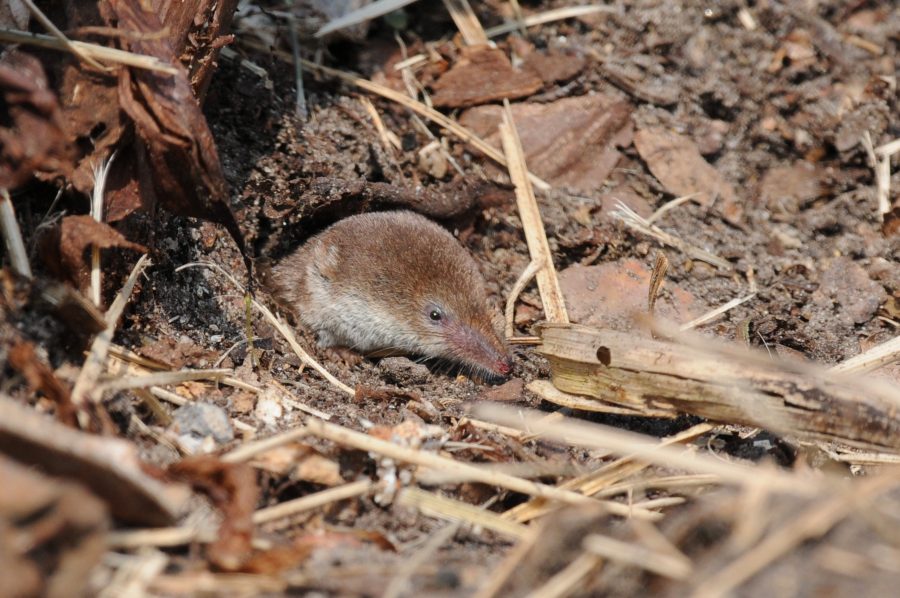It seems that winter is coming, and these rodents are naturally prepared. A group of international scientists has discovered that shrews —small mole-like mammals very similar to a little mouse, mostly inhabiting North America— change the size of their heads if the season makes them feel cold or not.
When it’s summer, these little animals usually have bigger heads that make them look much more in line with their bodies. But in winter, they tend to reduce them a few millimeters. According to the study published in the journal Currently Biology, the reason is still unknown, but the paper suggests that they might do it to save energy.

Typically, these intelligent rodents use certain skills to protect themselves against depredators. For example: to avoid felines, shrews release a very unpleasant odor that cats especially dislike. And to explore their habitat, they use echolocation.
There are already many studies about the shrews’ self-defense skills, but this ability is entirely new.
Although scientists indeed had encountered hundreds of dead shrews with different sizes of heads, they never understood why the difference between them was sometimes so big. Previous research suggested that dead shrews had different head sizes depending on the time of the year.
The dead shrews had bigger skulls in summer than in winter, and doctors based on this as a critical fact for this new investigation.
Today, we know that this very-unusual ability is called “Dehnel’s phenomenon,” and that shrews use it always to prepare for heavy, hard and cold times between December and February.
A phenomenon for better survival
Shrews are animals who don’t tend to go far while looking for food. Also, small animals, in general, don’t usually eat vast amounts of food. Thanks to the phenomenon, shrews might find themselves more comfortable to survive in woods and camps full of snow.
Finally, the phenomenon is known, and the scientific community can do more research on the little rodents’ ability. The study’s co-author, from the Max Planck Institute for Ornithology, Javier Lázaro, noted we can now say that “this is happening (within) individuals,” and that we can talk about “shrinkage and regrowth.”
“These animals cannot hibernate (and) they cannot migrate and they live in a very seasonal environment — so they need some alternative strategy to deal with winter,” Lázaro told The Guardian. “If you shrink an organ like the brain which is disproportionally more ‘expensive’ than other kinds of tissue you might save energy.”
The US and Germany team, led by Lázaro, told Current Biology how they were able to find and catch the shrews of the species Sorex araneus, also called “common shrew,” between summer 2014 and autumn 2015.
How the shrews were captured
Unlike previous studies, the researchers decided this time to catch, release and follow the same individuals for about six months.
The international team grouped a total of 37 different shrews at the beginning of summer 2014. They analyzed their skulls with X-rays and then integrated them with microchips. Thus, they were able to track them after they released the rodents.
The scientists trapped them again more than once to explore the changes while the seasons passed, and discovered fascinating facts. For example, not just their heads seemed to change depending on the season.

Lázaro and his team saw that the shrews’ body mass also changed during the year. On autumn, it decreased by around 17.6 percent compared to the first time they checked it. But in the spring, it increased back by 83.4 percent, around the time when the animals have their breeding season.
The skull, as previously thought, also suffered a change due to the Dehnel’s phenomenon. Compared to the first time scientists checked the height of their heads, they decreased an average of over 15 percent during autumn. When spring started to appear, the animals’ skulls regrew by 9.3 percent.
There are still mysteries
Maybe, the most impressive thing is that shrews were able to stretch their lifespan thanks to the phenomenon. They usually live for not more than a year, but — according to data collected from elder shrews — they appeared to undergo a second shrinkage in skull size as they advanced to a second winter.
“The fact that they shrink a second time in a second winter, really suggests (a) correlation between seasonality and the skull size and not just an ageing effect,” Lázaro said.
There’s another complicated thing about the shrew’s brain re-growth. In adults, Lázaro noted that their skulls remained almost as small as the last time it contracted, although their body mass seemed to be greater. This did not happen to young shrews, whose heads were able to normally reached the last size.
Lázaro still doesn’t know how the tissue it’s reabsorbed to make the heads smaller, and what causes this. He wonders if this affects the animals’ condition, behavior, or any other thing.
“We don’t know [to what extent] this is genetically programmed, and to which point this is influenced by environmental factors,” said Lázaro.
Source: Current Biology

Blacks do that every day